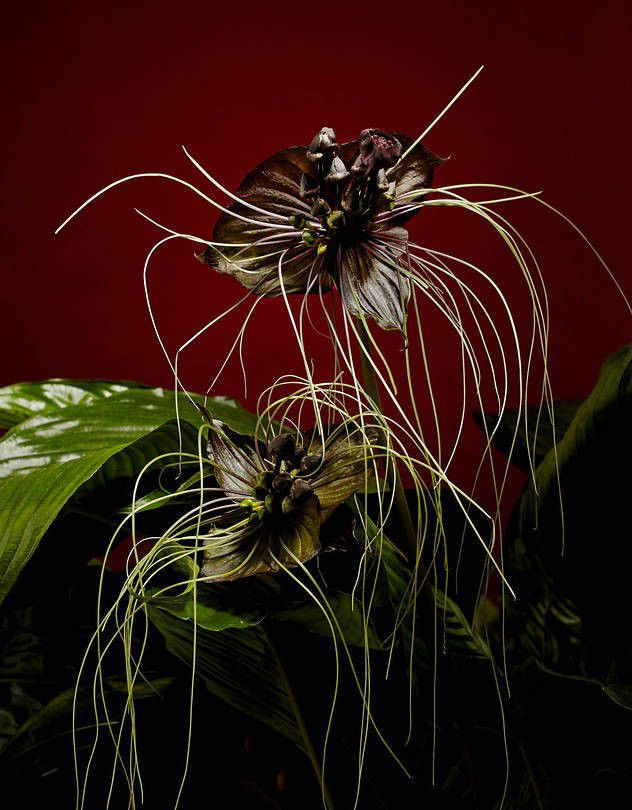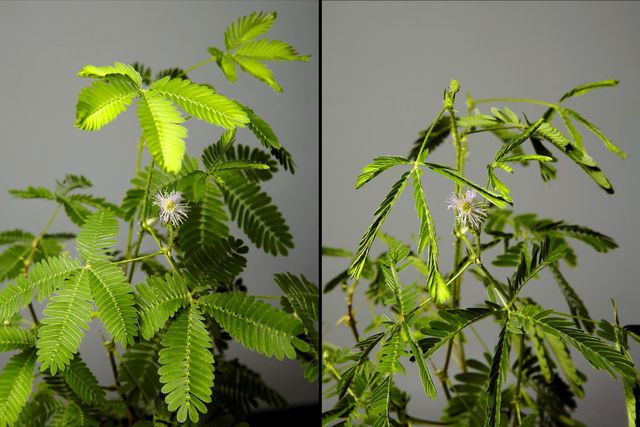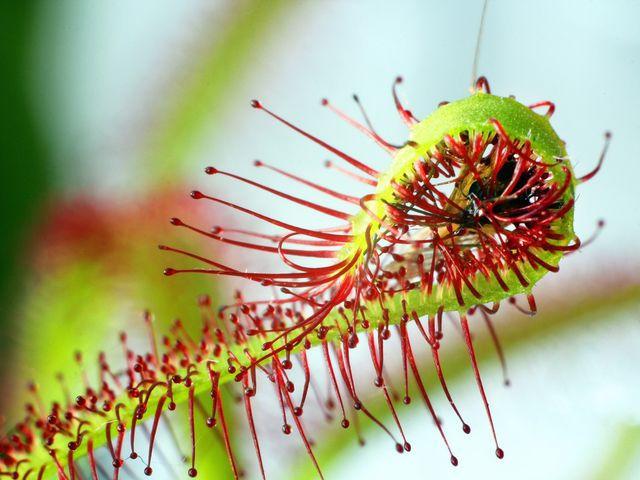Spooky Decorations from the Plant World
- Kathryn )'Shea-Evans
- Oct 25, 2017
- 3 min read
5 Unnervingly Spooky Houseplants for Halloween
By Kathryn O'Shea-Evans | Oct 25, 2017
F. Martin Ramin/The Wall Street Journal

If you feel silly dressing in costume for Halloween but still get a kick out of the holiday, why not invest in some creepy greenery that’s as anthropomorphic, carnivorous or eerie as anything Poe conjured? The fang-like Venus flytrap, indigenous to the bogs outside Wilmington, N.C., is only the start.
“There’s a huge, diverse world of beauty, form and life that most of us never really see,” said Byron Martin, whose grandfather founded Logee’s, a Connecticut retail greenhouse that specializes in rare plants, in 1892.
Consider the sensitive plant (Mimosa pudica), an invasive weed native to tropical areas of Central and South America, that literally recoils when you touch it (and at night)—its delicate leaves folding in anxiously on themselves. “Our nervous system impulses are a very similar mechanism,” said Bethany Stone, a professor at the University of Missouri who studied the plant’s reaction to the recent solar eclipse. (Spoiler alert: They closed up during totality.)
Fascination with creepy plants is nothing new. Charles Darwin meticulously studied them for “Insectivorous Plants,” his 1875 book. “The Victorians liked unusual plants; they weren’t as straight and stuffy as we think,” said Tracy Brindle, curator at the Mark Twain House & Museum in Connecticut, where a night-blooming cereus—a beguiling, nocturnal flower as seductive as any vampire—now grows in Twain’s own glass-walled conservatory.
Here, five house plants that make frightfully fun companions or unnerving gifts.
1. Black-bat flower
“Black-cat flower” might be a more appropriate name for these blossoms (Tacca chantrieri, pictured above). On either side of their orchid-like faces grow whisker-thin leaves called bracteoles that extend up to a foot long. The plant tends to bloom just before Halloween in keeping with its menacing mien. It also has a kinder, therapeutic side: Susan Mooberry, a professor of pharmacology at UT Health Science Center in San Antonio, is developing an alternative chemotherapy from the plant, which has been used to treat illnesses in its native China. “Almost every botanical garden has one—they’re so cool and dramatic—but they can be hard to grow,” Ms. Mooberry said. Humidity, partial sun and fertilizer every two weeks helps.
2. Sensitive plant
Sensitive plant
F. MARTIN RAMIN/ THE WALL STREET JOURNAL
Nicknames for Mimosa pudica include “the shame plant” and “the touch-me-not,” which tells you something of its disposition. “The movement may protect them from herbivores; it scares animals away,” said Ms. Stone. Like all invasive species, it’s easy to grow—keep it damp in a sunny locale and fertilize once in a while. Resist the urge to provoke it too often, sapping its energy. If its recoil weren’t disconcerting enough, the plant “may be able to signal to others—plant-to-plant communication,” said Ms. Stone, “but more research is needed before we’re sure.”

3. Cape sundew
Cape sundew with trapped insect
iStock/Sergey Aleshin
Sundews (Drosera capensis and intermedia)look as amiable as daisies, but these relatives of the Venus flytrap are rather depraved: Their gluey, dewy leaves snag insects while releasing enzymes like those we use to digest food. “Few plants resort to violence to make a living, but it helps them secure nutrients like nitrogen that’s lacking in their soil,” said Carter Butts, a professor who studies the plant’s genomes at the University of California, Irvine. Sundews are a bit fussy about water (it must be mineral-free and distilled) but never about fertilizer: Outdoor plants feed themselves, and “indoors, I use fish food, applied with tweezers,” Mr. Butts said.

4. Corpse flower
Corpse flower
iStock/Gueholl
More than 25,000 people descended on the New York Botanical Garden in 2016 for the rare blooming of its Corpse Flower, but it’s possible to have an Amorphophallus titanumall to yourself. Be warned: “It looks like something from science fiction, and, yes, smells like a rotting corpse,” said Julian Duval, president of the San Diego Botanic Garden. The site recently displayed two specimens in all their weird blooming glory, including the zombielike stench meant to attract carrion-feeding beetles, its pollinators. Best for large homes (they can grow up to 250 pounds) and people who don’t mind waiting for their morbid show: The plants bloom only every seven to 10 years.

5. Night-blooming cereus
Night-blooming cereus
iStock/Navaneeth Kishor
Many plants fold up at night to save water, stave off herbivores or both, said Nolan Coburn Kane, an ecology professor at the University of Colorado, Boulder. Night-blooming cereus does the opposite, springing into flower only under cover of darkness, as bewitching as a succubus. In 1864, Mark Twain wrote about Night-blooming cereus (Epiphyllum oxypetalum) for the San Francisco Daily Morning Call: “It is very regular in its habits, and those habits are bad—it runs all night; that is to say, it comes out in full bloom in the evening, and punctually shuts itself up in the morning and sleeps all day.” Bonus: This lazy house plant doesn’t mind if you’re lax, too—it prefers inconsistent sun and irregular watering.


























Comments